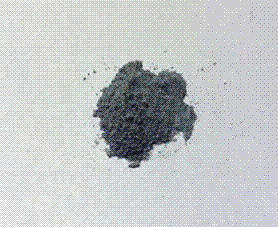Preparation method for Ti3+/TiO2 photo-catalyst with hollow structure
A photocatalyst and hollow structure technology, applied in the field of environmental management, can solve problems such as reducing photocatalytic performance, achieve good recyclability, improve absorption and response, and reduce time.
- Summary
- Abstract
- Description
- Claims
- Application Information
AI Technical Summary
Problems solved by technology
Method used
Image
Examples
Embodiment 1
[0025] Mix 3.54 mL of glacial acetic acid, 0.35 mL of deionized water, and 4.372 mL of ionic liquid [Bmim][BF 4 ] mixed together. On this basis, 2 mL of tetrabutyl titanate was added dropwise to the previous mixed solution at a rate of 0.1 mL / s, and stirred during the whole process until the precursor solution became clear and transparent. The homogeneous solution was transferred to a 70 mL polytetrafluoroethylene reaction tank, and was heated in a microwave reactor (MDS-6, Shanghai Xinyi) at 150 o C was taken out after reacting for 1 hour, and the collected powder was cleaned three times with deionized water and absolute ethanol respectively, and placed in an oven for 60 o C drying, and finally placed in a vacuum oven at 200 o C heat treatment for 6 hours.
[0026] According to the XRD test of the synthesized catalyst, all the samples of microwave-assisted solvothermal synthesis have good crystallinity. The way of conduction to reactant molecules, the particularity of mic...
Embodiment 2
[0028] Mix 3.54 mL of glacial acetic acid, 0.35 mL of deionized water, and 4.372 mL of ionic liquid [Bmim][BF 4 ] mixed together. On this basis, 2 mL of tetrabutyl titanate was added dropwise to the previous mixed solution at a rate of 0.1 mL / s, and stirred during the whole process until the precursor solution became clear and transparent. The homogeneous solution was transferred to a 70 mL polytetrafluoroethylene reaction tank, and was heated in a microwave reactor (MDS-6, Shanghai Xinyi) at 150 o C was taken out after reacting for 1 hour, and the collected powder was cleaned three times with deionized water and absolute ethanol respectively, and placed in an oven for 60 o C drying, synthesis of TiO with a hollow structure 2 . The sample had a degradation rate of 72% for methylene blue under visible light with a wavelength greater than 400 nm within 120 minutes.
Embodiment 3
[0030] Mix 3.54 mL of glacial acetic acid, 0.35 mL of deionized water, and 4.372 mL of ionic liquid [Bmim]Cl. On this basis, 2 mL of tetrabutyl titanate was added dropwise to the previous mixed solution at a rate of 0.1 mL / s, and stirred during the whole process until the precursor solution became clear and transparent. The homogeneous solution was transferred to a 70 mL polytetrafluoroethylene reaction tank, and was heated in a microwave reactor (MDS-6, Shanghai Xinyi) at 150 o C was taken out after reacting for 1 hour, and the collected powder was cleaned three times with deionized water and absolute ethanol respectively, and placed in an oven for 60 o C drying, and finally placed in a vacuum oven at 200 o C heat treatment for 6 hours. The sample had a degradation rate of 44% for methylene blue under visible light with a wavelength greater than 400 nm within 120 minutes.
PUM
 Login to View More
Login to View More Abstract
Description
Claims
Application Information
 Login to View More
Login to View More - R&D Engineer
- R&D Manager
- IP Professional
- Industry Leading Data Capabilities
- Powerful AI technology
- Patent DNA Extraction
Browse by: Latest US Patents, China's latest patents, Technical Efficacy Thesaurus, Application Domain, Technology Topic, Popular Technical Reports.
© 2024 PatSnap. All rights reserved.Legal|Privacy policy|Modern Slavery Act Transparency Statement|Sitemap|About US| Contact US: help@patsnap.com










